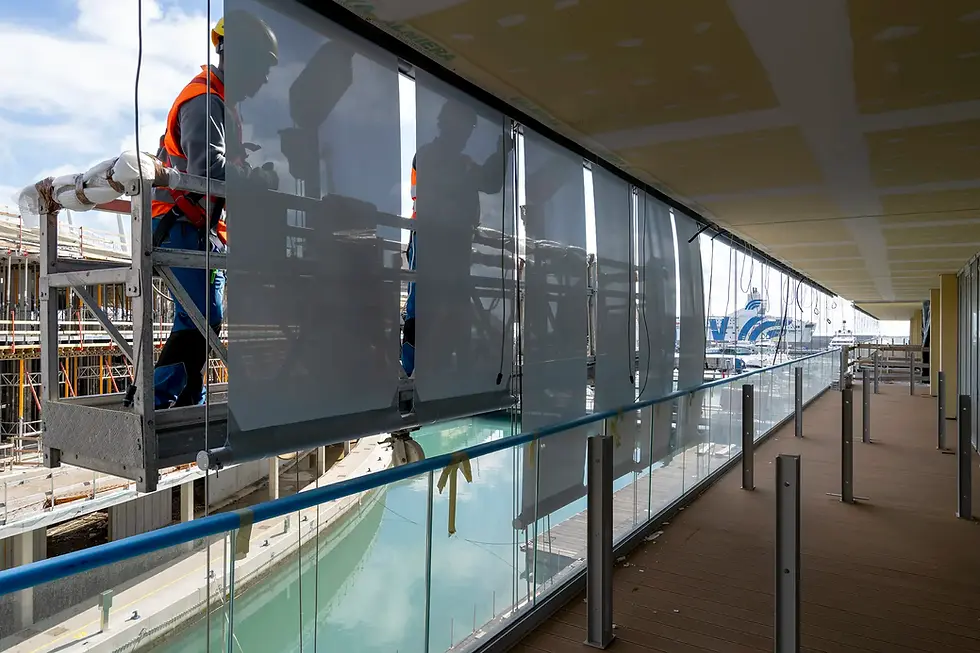History of Popular Shading Solutions
- Neil Gordon
- Mar 8, 2023
- 3 min read
The Roman Colosseum and more...

Engineered shading solutions have an interesting history that can be traced back thousands of years. The Greeks and Romans built porticos to provide shade from the elements, and many of these static structures can still be admired throughout historic sites in many European cities. While the porticos were effective, they had no moving parts, which is a key aspect of an engineered shading solution. However, a few of today’s popular shading solutions that meet our definition of engineered shading solutions originated in earlier times: roman shades, venetian blinds, and roller shades.
The Roman Shade
The Velarium
In the heyday of the Roman Colosseum (AD 70–80), crowds were entertained with spectacular gladiator contests in the open air. To protect the spectators from the harsh Italian sun, awnings were constructed that partially covered the arena and offered sun protection.
The awnings were an elaborate system of ropes and pulleys called the Velarium. The Velarium was the Latin name given for this retractable awning system. When they were not in use, the shades folded back on themselves, much like the modern shading style—the roman shade. What a feat of innovation and success that even in ancient times they were able to effectively reduce solar heat issues while creating a truly beautiful engineered shading solution.



The Venetian Blind
The early Venetians were great traders, and they are thought to have taken the idea of the Venetian blind from Persia to Venice. The Venetian slaves, once freed, are believed to have brought the blind to France as a means of their livelihood.
The first proof of blinds in America was in 1761 at St. Peter’s Church in Philadelphia where the windows were fitted with venetian blinds. The first entrepreneur of the venetian blind, John Webster of London, advertised his wares in 1767. Venetian blinds then appeared in the 1787 painting by J. L. Gerome Ferris, entitled The Visit of Paul Jones to the Constitutional Convention. Other illustrations show venetian blinds at Independence Hall in Philadelphia at the time of the signing of the Declaration of Independence.
The first large modern building in the United States to adopt venetian blinds was Rockefeller Center’s RCA Building in New York City at the turn of the twentieth century.

History of the Roller Shade
The Scotch Holland Roller Blinds originated in the early 1700s. They were made from Holland linen, which came from the Netherlands. The fabric was first produced in Glasgow, Scotland, by James Louis Robertson and John King, hence the name Scotch Holland. The first roller shade made from Scotch Holland linen did not have a spring mechanism. Instead, when the blind was closed, the fabric lay in folds on the windowsill. To open the blind, you had to pull on a cord that was attached to a top rod. To secure the open blind, you wound the cord around a cleat.
In 1864, Stewart Hartshorn patented the first spring roller design using a ratchet and gravity pawl. This spring roller window shade was the forerunner of today’s roller shades, and it used a spring mechanism to allow fabric to be rolled up or down. The spring roller window shade became very popular in America, and several production plants were opened in the early twentieth century. Below is a drawing of the spring roller, and to the right is the crank Star Shade cutting machine from the 1920s.







Comments